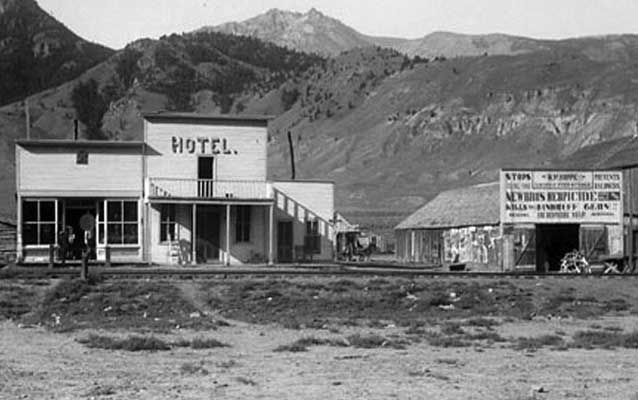Last updated: June 25, 2020
Place
Town Site of Cinnabar, Montana

NPS
In 1932, Yellowstone National Park increased in size by 7,609 acres to the north, on the west side of the Yellowstone River. Most of what are called the “boundary lands” was purchased from willing owners; the rest was taken by eminent domain. But the town of Cinnabar had been abandoned long before. Construction of the branch line from Livingston in 1883 made Cinnabar a hub for passengers and freight until the last three miles to the park entrance were built 20 years later.
Nothing remains of the town today except archeological evidence through which we can learn about the lives of its residents in the late 1800s.
To prevent impacts to archeological resources during a native plant restoration project planned for the boundary lands area, it was necessary to document where such resources were located. The Montana-Yellowstone Archeological Project (MYAP), a collaboration between the University of Montana and the National Park Service, surveyed about 3,000 acres and confirmed the location of the Cinnabar depot, excavated the blacksmith shop, and a likely foundation of a hotel. Historical artifacts on site included a railroad sign and revolver bullets.
The MYAP team also documented sites with prehistoric components, including a tipi ring cluster approximately 5,000 years old—one of the oldest known in the Northern Plains. They identified a total of 18 stone circles and salvaged five prehistoric fire pits that were eroding out of the banks of the Yellowstone River downstream from Cinnabar. These were probably last used by the Pelican Lake culture that lived there 2,000 years ago.
